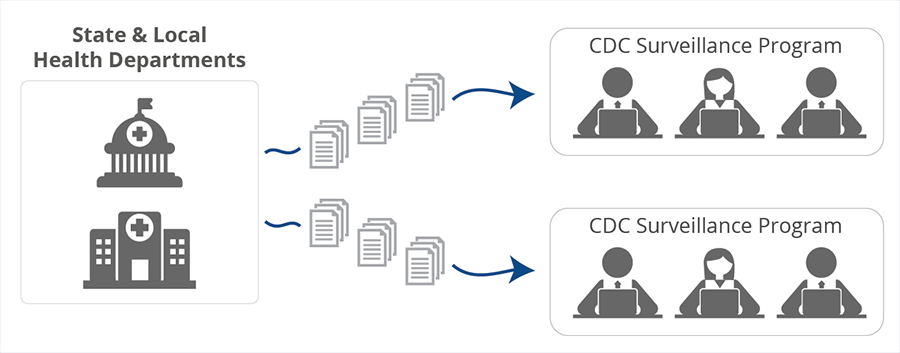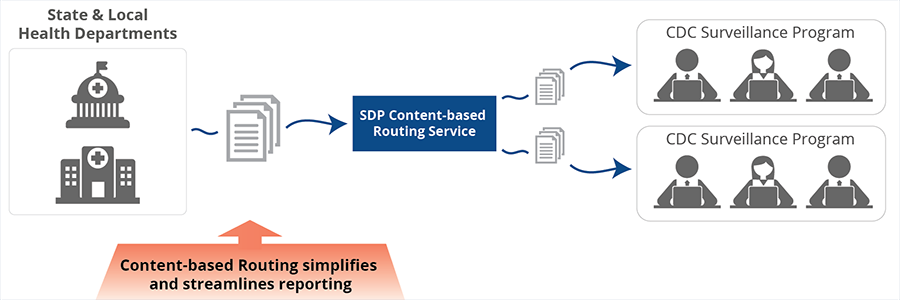How It Works / Getting Started
The Content-based Routing service works by receiving data transmissions sent by State, Tribal, Local, and Territorial (STLT) health departments, examining the content of the messages and securely sending them to the correct programs across the CDC.
SDP Content-based Routing Service Diagram
BEFORE
Busy disease detectives must send the same data multiple times and in multiple ways – a redundant process that creates undue reporting burden.

AFTER
Sending the data once cuts down the work. Routing service securely sends data to the correct programs.

How It Works
- Step 1: Data Submission Health departments submit data to CDC.
- Step 2: Computer Inspects and Sorts Data CDC’s Content-based Routing service looks at the data and routes it to the appropriate CDC programs or systems.
- Step 3 (n case of issues): Sender is Contacted If issues prevent delivery of the data, the sender will be contacted to resolve the problem and resubmit the data.
- Step 4: Data Used to Protect People The data is used by CDC or state disease detectives to update alerts, recommendations, or implement targeted programs to protect Americans.
Getting Started
The Content-based Routing service is a foundation-laying capability that allows CDC to more efficiently receive, test, validate, send, and share critical health information. With this shared service tool, CDC can more efficiently process the incoming reports they receive from states, and more efficiently share critical messages from these reports with the CDC programs that need them.
Launching in August 2017, the Content-based Routing tool will be used for infectious disease surveillance. Over time, the tool will be further developed for multiple programs users and other types of disease surveillance needs (including chronic disease, injuries, and other conditions).
If you are interested in learning more about how the Surveillance Data Platform Content-based Routing service can help your program with message routing, data transformation, or message testing and validation capabilities, please use the “Contact Us” button below.
Please be sure to include:
- Your contact information
- The disease program or system of interest
- Information on the messages used to share this surveillance information with the CDC (e.g., type of message sent, how it is currently sent)
- Page last reviewed: September 28, 2017
- Page last updated: September 28, 2017
- Content source:


 ShareCompartir
ShareCompartir